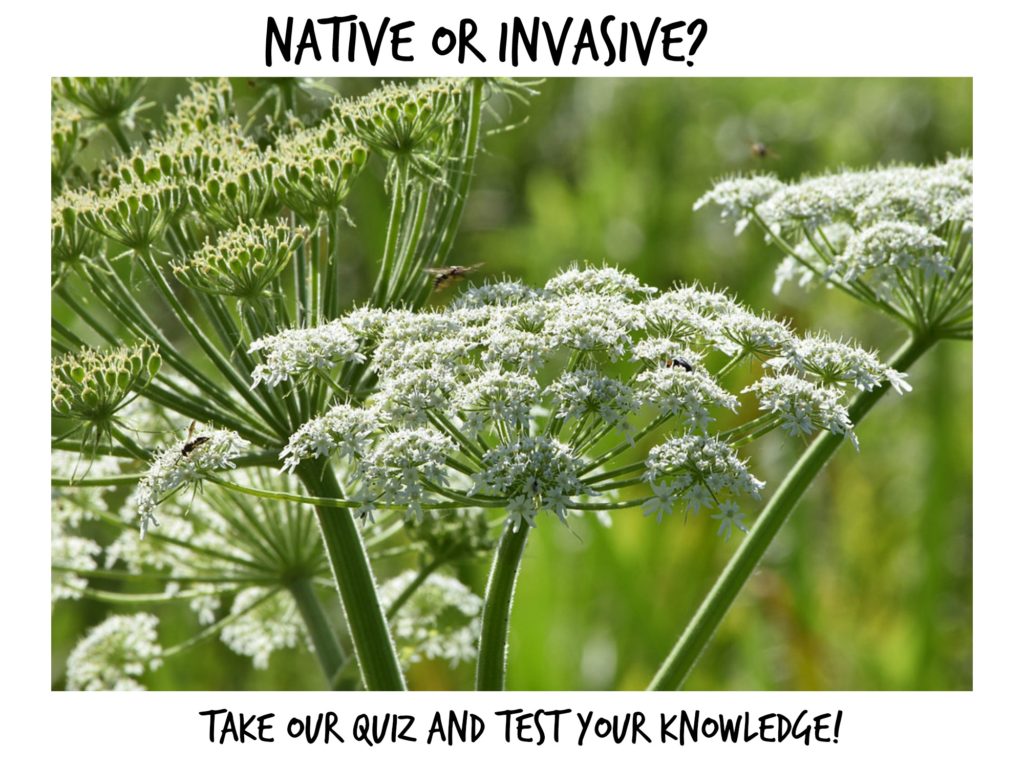Invasive (non-native) species are everywhere, and are so prevalent that it might come as a surprise as to which common plants are actually causing real problems for native plants and wildlife.
One of the many ways invasive plants manage to establish themselves is due to their look-a-like appearance to many native species. Becoming familiar with how to tell varieties apart is the first step is helping to cultivate our native species to thrive.
Understanding how non-native plants harm the natural eco-system of our regions can be a strong motivator in tackling the problems they create.
An easy example of this is these two varieties of blackberry –

(Above – the invasive Himalyan Blackberry vs. Below – the native Pacific Blackberry)

The Himalayan Blackberry is a prime example of how invasive species typically wreak havoc; “Due to its robust nature, it grows large and spreads rapidly, shading out many other understory plants, such as saplings of Douglas fir and ponderosa pine. It can invade almost any open space, such as oak woodlands, meadows and roadsides, and it thrives in riparian areas or wetlands, decreasing ecological diversity. It can clog up water flows in creeks, which can cause major problems during heavy rain.” (Redding.com, Native Plants: Blackberries: The good, bad and thorny.”, Jan 5 2017.)
Perhaps the most significant negative impact from invasive weeds is the loss of natural habitat. These non-native plants colonize habitats and exclude the native plants and animals, decreasing native biodiversity which is critical for healthy ecosystems.
Invasive species are among the leading threats to native wildlife. Approximately 42 percent of threatened or endangered species are at risk due to invasive species. (National Wildlife Federation, 2019)
Native plants have formed symbiotic relationships with native wildlife over thousands of years, and therefore offer the most sustainable habitat. A plant is considered native if it has occurred naturally in a particular region, ecosystem, or habitat without human introduction.
Why Do Native Plants Matter?
Restoring native plant habitat is vital to preserving biodiversity. By creating a native plant garden, each patch of habitat becomes part of a collective effort to nurture and sustain the living landscape for birds and other animals.
There are many ways that native habitat restoration and conservation help us –
- Low Maintenance – once established, native plants generally require little maintenance
- Healthier Yards and Outdoor Spaces – lawns and bark-mulched landscapes are notorious for requiring profuse amount of chemical pesticides, herbicides, as well as artificial fertilizers. Allowing native plants to flourish means less of these harmful substances
- Helping the Climate – Landscaping with native plants can help combat climate change. Besides the reduction in chemical treatments, noise and pollution from mower exhausts, many native plants especially long-living trees like oaks and maples are effective at storing the greenhouse gas carbon dioxide
- Supporting Wildlife – In addition to providing vital habitat for birds, many other species of wildlife benefits as well. Native plants provide nectar for pollinators and provide protective shelter for many birds and mammals. The native nuts, seeds, and fruits produced by these plants offer essential foods for all forms of wildlife.
Hopefully invasive and native plant identification will be a fun and rewarding pursuit! Check out our Invasive vs. Native pages for more information and resources!



